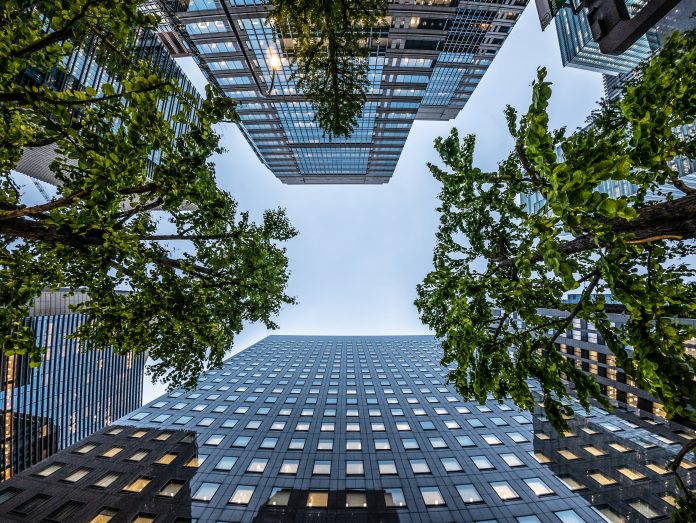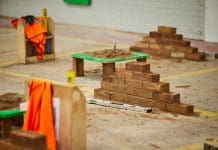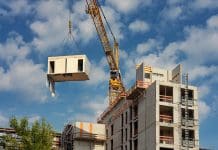Industry professionals reflect and share their predictions on COP27 and the built environment, highlighting some of the key talking points, takeaways and actions needed to reduce emissions levels within the construction industry
For all the promises of definitive answers to the climate crisis, the outcome of events at last month’s COP27 seemed frustratingly inconclusive. While a new climate costs agreement was ratified to aid the most vulnerable nations impacted by climate change, signalling a shift in approach, the general consensus is that much more needs to be done to rectify our carbon footprint’s impact on the planet.
The built environment remains a significant contributor to rising emissions from both a construction and operational perspective. The message that we need to reduce carbon emissions throughout the industry urgently remains a recurring theme. Only when this is achieved will we be seen to be making significant strides toward Net Zero 2050.
How can the construction industry tackle rising emissions?
The question is, how do businesses implement these positive changes effectively?
We’ve asked some of the industry’s leading professionals to provide their insights on tackling this challenge head-on.
Erik Boyter, CEO, WindowMaster:
“Reductions pledged by world leaders at COP26 last year have proved insufficient in keeping global warming within agreed parameters. It’s time for businesses and industries worldwide to translate worthy words into tangible actions, moving from verbal commitments to implementing measures that will shrink their own carbon footprints. Implementing a straightforward carbon tax is one such measure to help regulate and guide sustainable development, pushing through a meaningful reduction in emissions.”
Convert to HVAC
“Businesses can go further by looking at the operational costs of their offices and facilities and identify the low-hanging fruit, which can easily be resolved. HVAC is one area where steps toward big carbon savings can be made by converting from high-energy-consumption mechanical systems to passive or natural ones. Simple to install and cost-effective, they can quickly make a big difference, not only driving down CO2 but also achieving lower energy bills.”
Reduce reliance on high-carbon materials and opt for timber
Ian King, COO of fire retardant technology company Zeroignition:
“The closing of COP27 marks another year on the road to decarbonising the built environment, and it’s evident there’s far more work to be done if we are to reduce carbon emissions. One area of focus is reducing our reliance on materials with high carbon footprints, like steel and concrete. Steel alone is responsible for around 9% of global CO2 emissions – this needs to be urgently addressed if we are to reach 2050 Net-Zero goals.
Now the focus must move from ambition to action.
“Fortunately, timber and wood panel construction is rising, offering the construction industry some relief with wood’s strong green credentials. While the perception is that wood burns are a hurdle, solutions have been developed to resolve this issue and reduce risk; innovation is driving the use of non-toxic fire-retardant-treated building materials. Couple this with a systematic approach to fire safety, and I am confident building projects will deliver both safeties and reduce the industry’s carbon footprint.”
Renewable Base Load energy source
Stuart Murphy, founder & inventor, TPGen24:
“It’s a terrible global climate situation that we have reached to the point where the core focus of COP is now finding the money to deal with the consequences of our addiction to fossil fuels. This year has been a stark reminder that the clock is ticking ever faster, and we must tackle climate change head-on.
“The commitments made at COP27 were wholly underwhelming, which is surprising given the severity of the situation and energy crisis in Europe. It feels like global nations are too afraid to do what needs to be done by decarbonising highly emitting industries and making renewable energy investment not only a priority but a top priority.
“We also need to diversify our energy mix and not keep banging the same solar and wind drums when these renewables are intermittent. Equally, more nuclear isn’t going to cut it. Granted, the climate issue is an economic one and raising that kind of money can be challenging. But even when we find the funds, there needs to be a renewable Base Load energy source, like tidal range, to funnel them into.”
As 2022 draws to a close, what’s undeniable is the need for the industry to turn good intentions into real action and fast. As build costs continue to rise, we need to discourage the use of high-energy-intensive materials and promote a leaner, more creative and conscientious approach to sustainable design.














